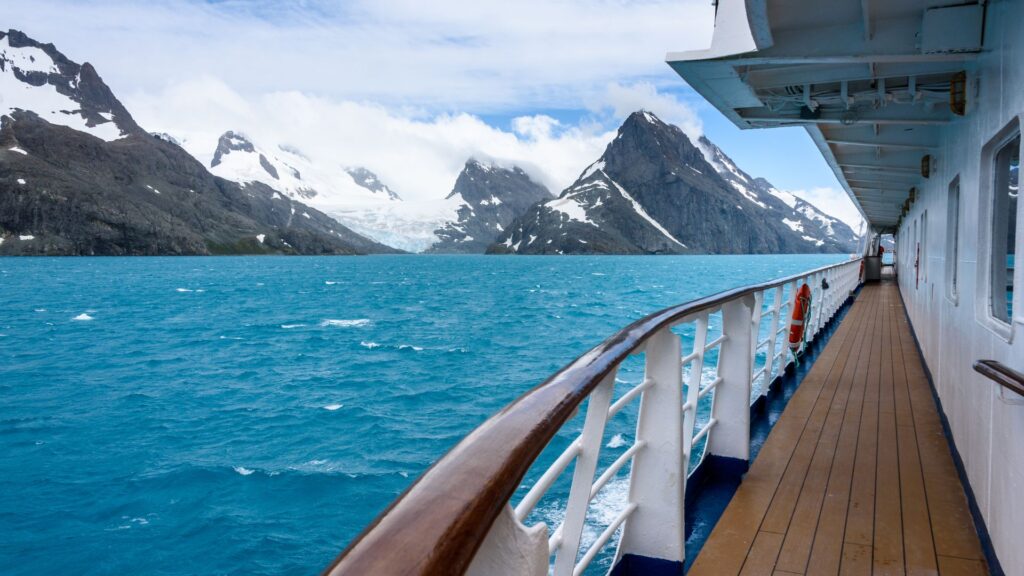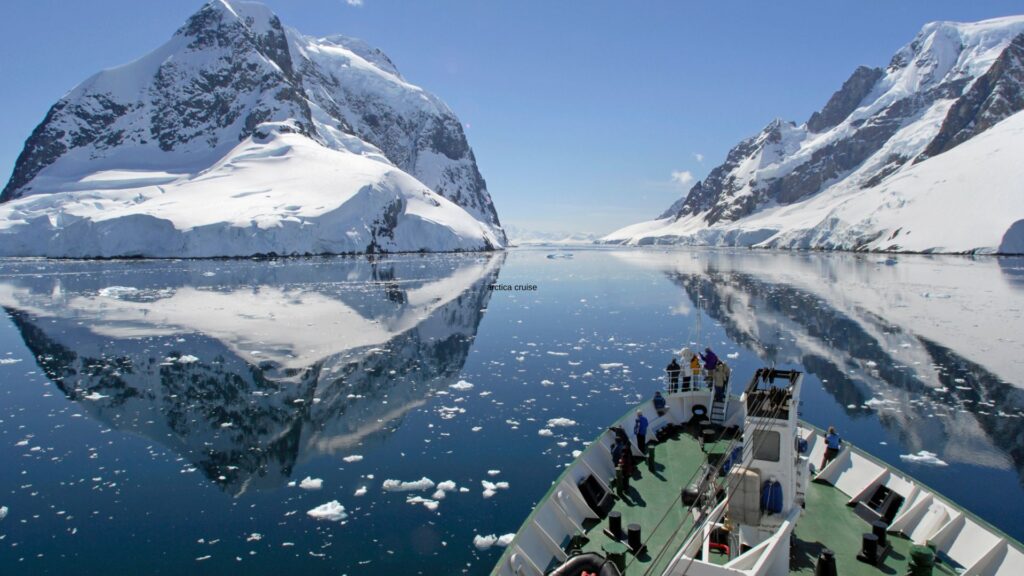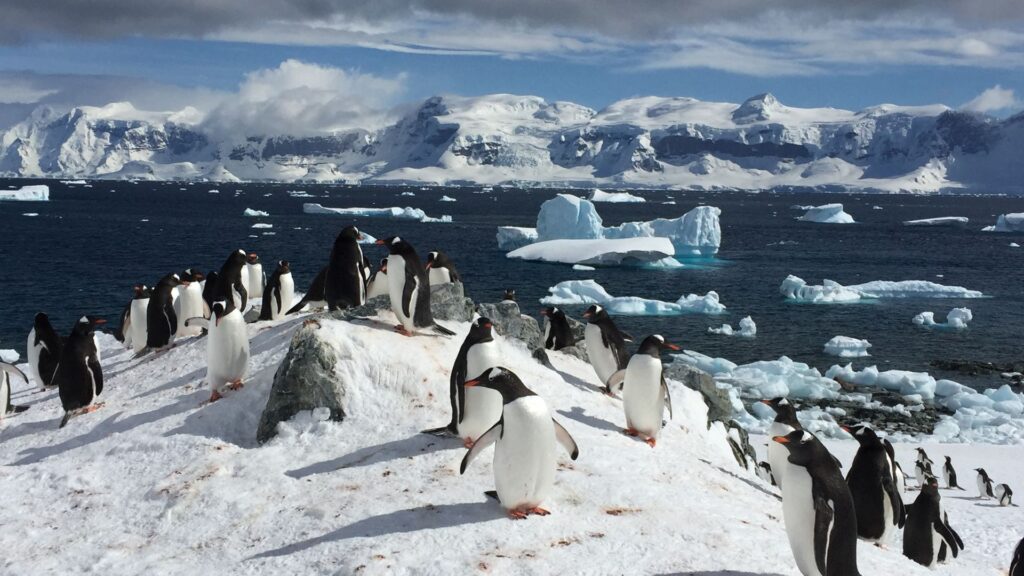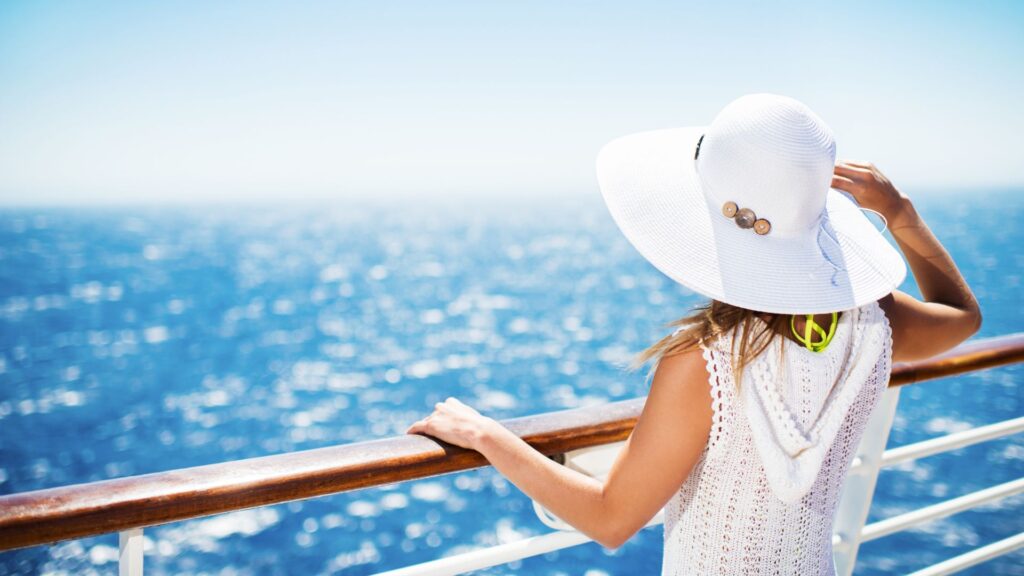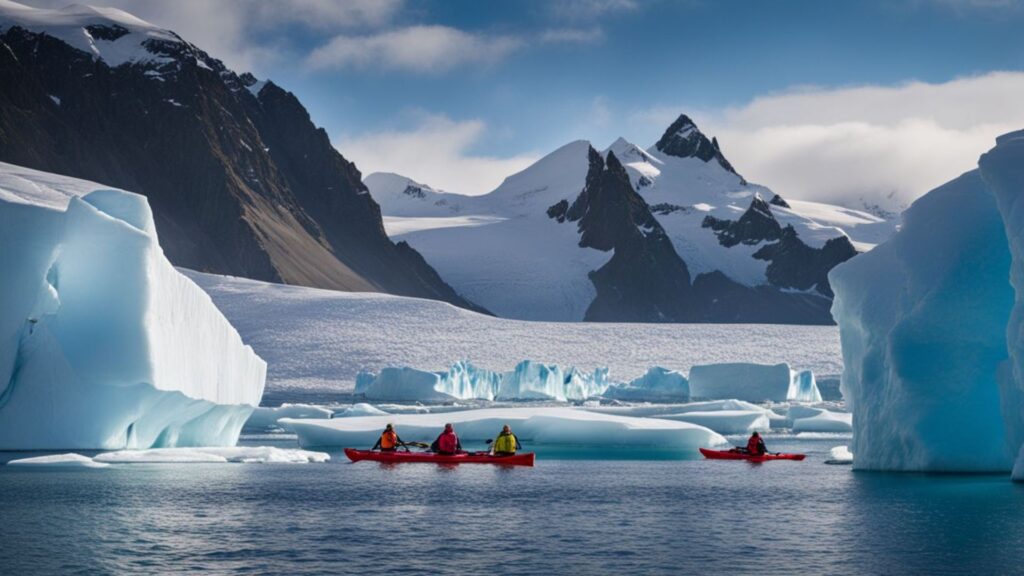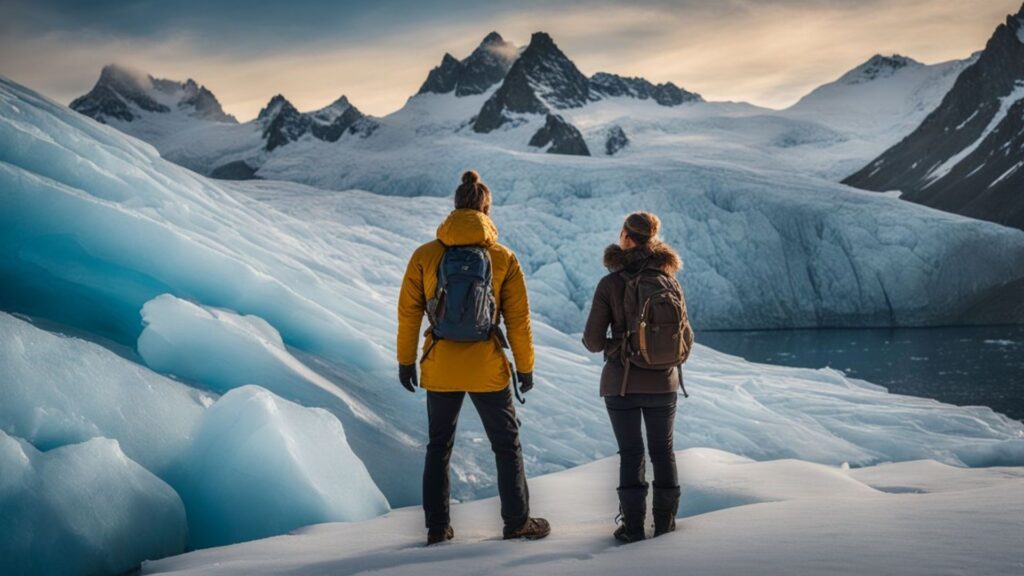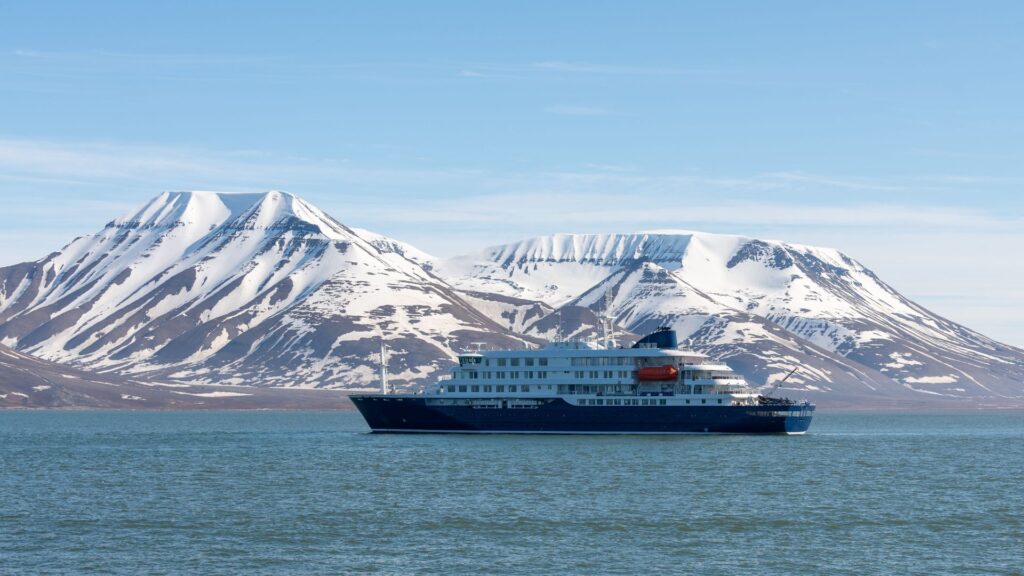Many travelers find it overwhelming to decide the best time to visit Antarctica. With its remote location and extreme weather conditions, planning a trip to this icy continent requires careful consideration.
A crucial fact to remember is that the Antarctic summer, from November through March, offers warmer temperatures and more accessible wildlife experiences than other times of the year.
This article aims to help you select the perfect timeframe for your Antarctica cruise by examining various factors such as wildlife activity, weather patterns, and peak travel months.
Whether you’re keen on photographing pristine snowy landscapes or observing colonies of penguin chicks and seal pups in their natural habitat, we’ve got you covered. Get ready for an unforgettable Antarctic adventure.
Key Takeaways
- Summer is the ideal season for an Antarctica cruise from November to March due to warmer temperatures and extended daylight hours, which allow for more outdoor activities like hiking and wildlife viewing.
- December and January are peak months for visiting Antarctica. They offer the warmest temperatures, the most extended daylight hours, and the best opportunities to witness wildlife, such as penguin chicks hatching and whales feeding near shorelines.
- Plan your visit between October and March to see penguins engaging in breeding and nurturing behaviors in their natural habitat. Notable moments include penguin nest preparation in the early season and chick hatching around December.
Why Summer Is Ideal for Visiting Antarctica?
Thanks to its extended daylight hours and milder temperatures, summer is the perfect season for an Antarctica cruise. Visitors relish the opportunity to explore more of the white continent’s pristine landscapes under the summer sun, making activities like hiking, kayaking, and wildlife photography not just possible but truly enjoyable.
Cruises to Antarctica during these months offer many itineraries that might include breathtaking destinations such as the awe-inspiring Antarctic Peninsula, wildlife-rich South Georgia, and the remote Falkland Islands.
Summer is when Antarctica reveals its most accessible and vibrant self.
With flights to Antarctica more frequent in summer, adventurers find it easier to reach this elusive destination. The season also promises a broader selection of Antarctica cruise deals, enhancing accessibility for those eager to witness its extraordinary scenery and abundant wildlife.
The allure of camping out on ice becomes distinctly appealing, with warmer weather setting a comfortable stage for overnight stays amidst nature’s magnificence. Moreover, this period gifts travelers with phenomenal sights like the midnight sun—where darkness barely falls—offering uninterrupted marvels of icebergs calving or whales breaching in Antarctic waters.
When to See Penguins in Antarctica?
Transitioning from why summer stands out as the prime season for cruises to Antarctica adventures, it’s crucial to pinpoint the most opportune moments for penguin encounters in this icy area. The period between October and March marks an exceptional window to witness these iconic birds in their natural habitat.
Visitors have the unique chance to see adult penguins busily preparing nests during the early season, with November highlighting the start of a bustling breeding season.
Penguin sightings peak around December and January, aligning perfectly with opportunities to observe seal pups along the frozen landscapes and engage in whale-watching activities that enrich the Antarctic cruise experience.
As February rolls into March, photographers and wildlife enthusiasts have a golden opportunity to capture vibrant autumnal hues amidst dramatic landscapes, making every moment ideal for those who venture south.
This timeline maximizes encounters with king penguins, chinstrap penguins, and gentle Gentoo species. Also, it caters to individuals eager to explore beyond pack ice barriers into regions like the Ross Sea or the Weddell Sea aboard the best Antarctica cruises.
How to Plan for Weather in Antarctica?
After exploring the best times to see penguins, preparing for Antarctica’s unpredictable weather is the next crucial aspect of your journey. The Antarctic climate can be extreme, and being well-prepared along with the Antarctica cruise cost will ensure a more comfortable and safe expedition.
- Check the forecast regularly before your trip for the latest updates on Antarctic weather, as it can change rapidly.
- Understand that temperatures during the austral summer, which runs from late October through March, hover around 32°F (0°C) but can feel colder due to wind chill.
- Pack layers of thermal clothing designed for sub-zero conditions, including waterproof outerwear to protect against sea spray and precipitation.
- Invest in polar-rated waterproof boots for excursions onto sea ice or ashore.
- Bring gloves, hats, and scarves that keep you warm even in wet conditions.
- Consider sunglasses with UV protection and high SPF sunscreen since the ozone layer is thinner over the Antarctic region, increasing exposure to harmful UV rays.
- Keep electronic devices fully charged and stored in insulated bags when not in use; cold temperatures can significantly reduce battery life.
- Plan activities around midday when temperatures are slightly warmer and wildlife like seals, humpback whales, and various penguin species are more active.
- Carry camera gear that can withstand cold and damp conditions if you’re into photography; consider bringing extra batteries kept warm in an inner pocket.
- Respect your Antarctica expedition team’s safety guidelines regarding weather conditions for outdoor activities like kayaking or mountaineering.
By following these tips for planning around Antarctica’s weather, travelers can enjoy their adventure while minimizing the discomfort and risk associated with the continent’s extreme conditions.
What Are the Peak Months for Antarctica Cruises?
Exploring Antarctica’s serene beauty and unmatched wilderness becomes a reality for many during its peak cruise months. The best time to start on this journey, as identified between October and March, sees varying attractions across different periods.
Month Highlights
October Season opening, pristine snowscapes
November Penguin courting and breeding season begins
December Peak of summer, seal pups and whale sightings increase
January’s Warmest temperatures, extended daylight hours
February Whale watching opportunities, vibrant photography conditions
March Autumn colors, end of the cruise season
December and January emerge as the most popular months for Antarctica cruises, allowing travelers to witness the continent in full bloom. With warmer temperatures and extended daylight hours, these months allow for extensive exploration and wildlife observation. The charm of witnessing seal pups play on the ice and the chance to see whales in their natural habitat draw visitors from around the globe.
November is crucial for those eager to see penguins courting and initiating their breeding season. This provides a unique glimpse into the life cycle in this remote landscape. February and March, on the other hand, cater to photography enthusiasts and those mesmerized by the subtle shift in the landscape as autumn colors emerge.
Choosing the right time for an Antarctica expedition depends on what one hopes to see and experience. Each period offers something distinctive and talks about the Antarctica cruise: the serene beauty of untouched snow in October or the dynamic life cycle of the continent’s wildlife from November to March. This table aims to guide potential travelers in selecting the optimal time for their Antarctic journey, ensuring an unforgettable adventure in one of the planet’s most extraordinary destinations.
If you’re looking for the perfect affordable Antarctica cruise price package for your adventure, contact us!
Why December Is Popular for Antarctica Travel?
Transitioning from discussing the peak months for the Antarctica cruise, it becomes clear why December stands out as a sought-after time for travelers. This month marks the beginning of the Antarctic summer season, welcoming longer daylight hours and warmer temperatures.
Such conditions make December an ideal period for engaging in outdoor activities like hiking, camping, and kayaking amidst Antarctica’s breathtaking landscapes.
December’s appeal is further magnified by its wildlife encounters. Penguins begin hatching their chicks, whales are seen feeding actively in the nutrient-rich waters, and seals are more commonly spotted along the shoreline.
This month provides unparalleled photography opportunities for those aiming to capture the essence of Antarctica through their lenses. Extended daylight hours illuminate massive icebergs, calving off glaciers and diverse wildlife interactions across the continent.
Looking for the best Antarctica cruise deals? Check out our website and contact us today!
How to Choose the Best Time for an Antarctica Expedition?
Choosing the best time to travel to Antarctica for an expedition depends on what you want to see and do. Weather, wildlife, and activities vary significantly throughout the year, making some months more suitable for specific experiences.
- If you want to witness the miracle of life, consider visiting in early December. This is when fluffy penguin chicks start hatching, and seal pups make their first appearance, transforming the landscape into a bustling nursery.
- Opt for November to early December to see Antarctica’s wildlife begin their breeding season. During this period, penguins, seals, and other creatures are more active on land as they prepare for new life.
- If photography is your passion, choose February or March. The lighting is phenomenal, and autumn colors begin to paint the landscapes in genuinely mesmerizing hues against the backdrop of retreating ice.
- Select December through January for peak whale-watching opportunities. Minke whales, blue whales, and orcas travel closer to shore to feed on krill, offering spectacular sightings.
- If you’re fascinated by icebergs and sea ice, plan your trip around November. This is when sea ice breaks up, allowing cruise ships to access previously unreachable areas like Snow Hill Island or the Emperor Penguin Colony.
- Opt for a cruise in late February or early March to avoid peak season crowds while enjoying abundant wildlife sightings and favorable weather conditions.
- Choose your timing wisely to target specific wildlife encounters. Visit from late January through February for fur seals’ mating season along the beaches or in March to catch sight of leopard seals hunting in dwindling ice floes.
- Aim for an expedition that crosses the Antarctic Circle in January or early February when sea conditions allow access further south than at any other time during the Antarctic summer.
- If cost is a concern, consider traveling at the beginning (November) or end (March) of the tourist season when Antarctica cruise prices may be lower due to less demand than in peak months.
- For those interested in historical sites and research stations, plan your visit during mid-summer months like January, when most stations are staffed and sometimes open to tourists.
Each bullet point offers a unique perspective based on various interests, such as wildlife viewing opportunities, including emperor penguins and baby penguins sightings; photography conditions with spectacular sunsets; adventure activities enabled by abundant sea ice; budget considerations with varying Antarctica cruise costs; cultural experiences at research stations; plus tips on how to avoid crowds during peak seasons in Antarctica’s leading locales like Drake Passage and South Shetland Islands among others known destinations across the polar circle’s embrace.
What Wildlife to Expect Each Season in Antarctica?
Selecting the ideal time for flights to Antarctica expeditions involves understanding the unique wildlife spectacles each season offers. November marks the beginning of a magical period in Antarctica, serving as a gateway for those keen to observe penguin colonies bustling with activity as they enter their breeding season.
This time is particularly significant as it introduces visitors to the lively world where creatures like Gentoo and Macaroni penguins start preparing for a new life, offering an unmatched opportunity for enthusiasts and wildlife photographers.
Antarctica reveals further wonders as the southern hemisphere’s summer months progress into December and January, with seal pups making their first appearance and whale sightings becoming increasingly common around South Georgia Island.
The mix of vibrant wildlife activities during this peak period provides travelers with profound insights into nature’s rhythms, encapsulating moments that define the essence of visiting Antarctica.
February and March continue to enchant visitors, presenting a transformed landscape filled with autumn hues ideal for photography while signaling a serene conclusion to the continent’s bustling lifecycle activities.
How to Avoid Crowds When Visiting Antarctica?
Visiting Antarctica offers a unique experience far removed from crowded tourist destinations. Planning your expedition during less busy times is vital to truly enjoy the pristine landscapes and wildlife without the hustle of large groups.
- Choose your travel time wisely by choosing the beginning or end of the Antarctic season, which runs from November to March. Early November or late March typically sees fewer visitors.
- Look into smaller Antarctic cruises, which offer a more intimate experience with fewer passengers and make stops at less visited landing sites.
- Consider flying over to Antarctica if you’re short on time or prefer to avoid sea travel; flight options can sometimes access areas less frequented by cruise ships.
- Explore regions beyond the most popular tourist spots; for instance, the wildlife-rich South Georgia offers an incredible array of sea birds and elephant seals with fewer crowds.
- Book your expedition early in January to witness young gentoo penguins without the peak December crowds.
- Research and select activities off the beaten path; kayaking and camping excursions can lead you away from larger groups.
- Engage with companies specializing in customized Antarctic experiences. They often have access to exclusive locations that are not available for more extensive tour operations.
Understanding what wildlife you can expect each season in Antarctica further enhances your visit’s timing and overall experience for the best Antarctica cruise.
Conclusion
Choosing the best time to go to Antarctica ensures an unforgettable journey filled with unique wildlife encounters and breathtaking landscapes. Early January often presents the magical sight of young penguins and vibrant wildlife in South Georgia.
Planning your visit around peak months offers smoother sailing across the Drake Passage and maximizes adventure activities under favorable Antarctica weather conditions. Direct questions about your ideal Antarctic experience guide you toward a customized expedition, whether it involves capturing autumn colors or exploring ice-filled waters by kayak.
Embrace the untouched beauty of Earth’s southernmost frontier, where each season unfolds new wonders waiting for you to discover.
FAQs
- What is the best time to travel to Antarctica?
The best time to visit Antarctica is during its summer months, from November through March, when you can experience milder weather and longer daylight hours.
- Why is early January considered a great time to go to Antarctica?
Early January is ideal for visiting Antarctica because the ice melts enough to allow easier access for ships and when wildlife, including young penguins, is most active.
- Can I see wildlife in South Georgia at the right time?
Yes, visiting the wildlife-rich South Georgia island between December and February offers opportunities to see various birds and seals alongside breeding colonies of king penguins.
- How does the weather affect my trip to Antarctica?
Antarctica’s weather plays a significant role in planning your trip; choosing dates within the Antarctic summer ensures safer sea conditions and more accessible viewing of its stunning landscapes and abundant wildlife.

